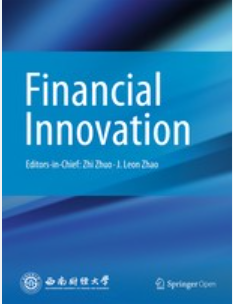Interlinkages across US sectoral returns: time-varying interconnectedness and hedging effectiveness
IF 7.2
1区 经济学
Q1 BUSINESS, FINANCE
引用次数: 0
Abstract
This study examines the time-varying asymmetric interlinkages between nine US sectoral returns from January 2020 to January 2023. To this end, we used the time-varying parameter vector autoregression (TVP-VAR) asymmetric connectedness approach of Adekoya et al. (Resour Policy 77:102728, 2022a, Resour Policy 78:102877, 2022b) and analyzed the time-varying transmitting/receiving roles of sectors, considering the positive and negative impacts of the spillovers. We further estimate negative spillovers networks at two burst times (the declaration of the COVID-19 pandemic by the World Health Organization on 11 March 2020 and the start of Russian-Ukrainian war on 24 February 2022, respectively). Moreover, we performed a portfolio back-testing analysis to determine the time-varying portfolio allocations and hedging the effectiveness of different portfolio construction techniques. Our results reveal that (i) the sectoral return series are strongly interconnected, and negative spillovers dominate the study period; (ii) US sectoral returns are more sensitive to negative shocks, particularly during the burst times; (iii) the overall, positive, and negative connectedness indices reached their maximums on March 16, 2020; (iv) the industry sector is the largest transmitter/recipient of return shocks on average; and (v) the minimum correlation and connectedness portfolio approaches robustly capture asymmetries. Our findings provide suggestions for investors, portfolio managers, and policymakers regarding optimal portfolio strategies and risk supervision.美国各行业回报之间的相互联系:随时间变化的相互关联性和对冲效果
本研究探讨了 2020 年 1 月至 2023 年 1 月期间美国九个行业回报率之间的时变非对称相互联系。为此,我们采用了 Adekoya 等人(Resour Policy 77:102728, 2022a,Resour Policy 78:102877, 2022b)的时变参数向量自回归(TVP-VAR)非对称关联性方法,分析了各部门的时变传递/接收作用,并考虑了溢出效应的正面和负面影响。我们进一步估算了两个突发时间(分别为 2020 年 3 月 11 日世界卫生组织宣布 COVID-19 大流行和 2022 年 2 月 24 日俄乌战争爆发)的负溢出效应网络。此外,我们还进行了投资组合回测分析,以确定不同投资组合构建技术的时变投资组合分配和对冲效果。我们的研究结果表明:(i) 行业回报序列具有很强的关联性,负溢出效应在研究期间占主导地位;(ii) 美国行业回报对负面冲击更为敏感,尤其是在爆发期;(iii) 2020 年 3 月 16 日,整体、正向和负向关联性指数均达到最大值;(iv) 平均而言,行业是回报冲击的最大传播者/接受者;(v) 最小相关性和关联性投资组合方法能够稳健地捕捉非对称性。我们的研究结果为投资者、投资组合经理和政策制定者提供了有关最佳投资组合策略和风险监管的建议。
本文章由计算机程序翻译,如有差异,请以英文原文为准。
求助全文
约1分钟内获得全文
求助全文
来源期刊

Financial Innovation
Economics, Econometrics and Finance-Finance
CiteScore
11.40
自引率
11.90%
发文量
95
审稿时长
5 weeks
期刊介绍:
Financial Innovation (FIN), a Springer OA journal sponsored by Southwestern University of Finance and Economics, serves as a global academic platform for sharing research findings in all aspects of financial innovation during the electronic business era. It facilitates interactions among researchers, policymakers, and practitioners, focusing on new financial instruments, technologies, markets, and institutions. Emphasizing emerging financial products enabled by disruptive technologies, FIN publishes high-quality academic and practical papers. The journal is peer-reviewed, indexed in SSCI, Scopus, Google Scholar, CNKI, CQVIP, and more.
 求助内容:
求助内容: 应助结果提醒方式:
应助结果提醒方式:


